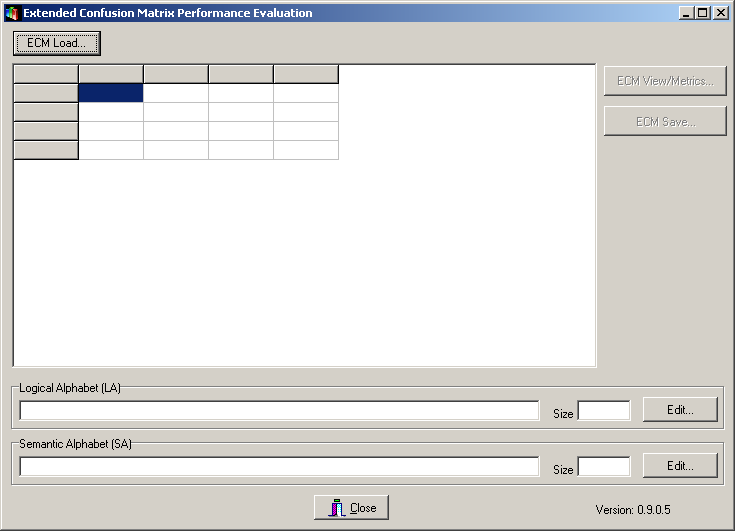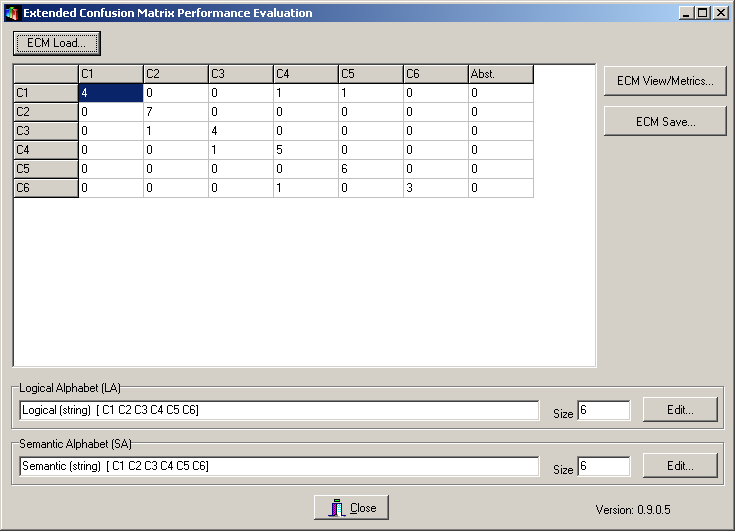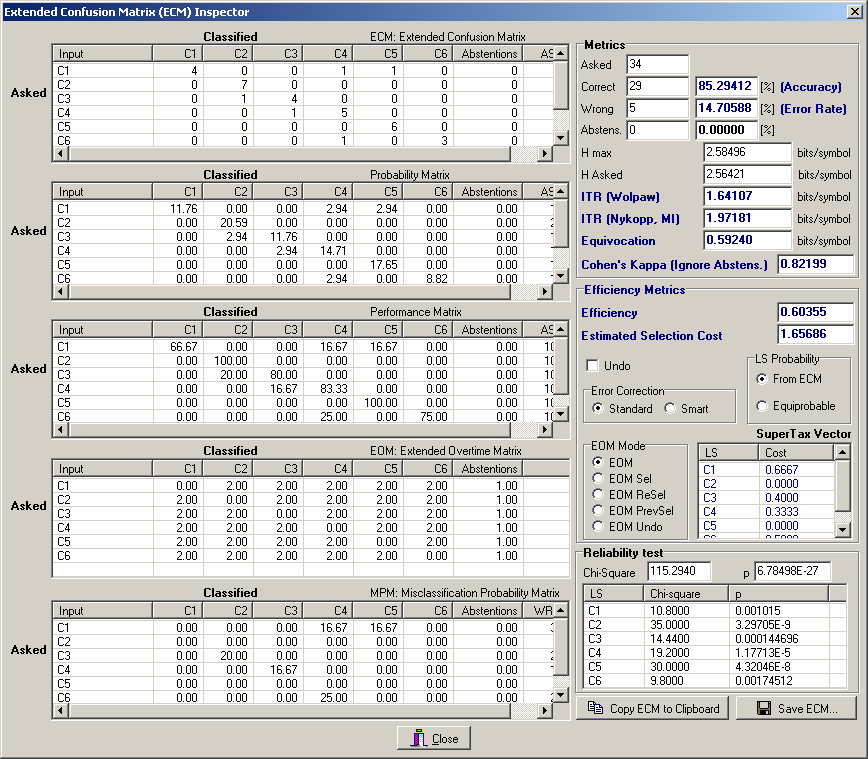The Performance Metrics Toy is a simple tool which allows to compute several metrics from an Extended Confusion Matrix (ECM) which characterizes a Transducer. To use it it is sufficient to launch it from the BF++ Toys Windows Start menu (Start | NPXLab | BF++ Toys | Performance Metrics). The following form will be shown. The only thing you have to do is to load a file, by pressing the "ECM Load..." button.

There are two kind of files that can be loaded:
1) A ECM file, generated by other BF++ Toys, such as the Confusion Matrix Generator BF++ Toy.
2) A Classification Sequence ASCII file in which two columns of labels are reported, the first one that describe the desired classifier output, and the other one the corresponding actual output. An example of this kind of file is the following one (C1 to C6 represent classes, or the Logical Alphabet):
-----FILE BEGIN-----
C1 C1
C1 C5
C2 C2
C5 C5
C3 C3
C2 C2
C4 C3
C4 C4
C5 C5
C3 C3
C2 C2
C6 C6
C4 C4
C6 C6
C5 C5
C4 C4
C2 C2
C3 C2
C1 C1
C5 C5
C1 C1
C4 C4
C3 C3
C5 C5
C6 C4
C2 C2
C3 C3
C5 C5
C6 C6
C4 C4
C1 C1
C1 C4
C2 C2
C2 C2
-----FILE END-----
In the previous sample file the first desired output was C1 and actually it was correctly classified as C1, whereas the second one was misclassified as C5, instead of C1, and so on.
From this sequence file this Toys can deduce the ECM and also the Logical Alphabet, which is the set of classes (labels) included in the file (C1, C2,... C6 in the example).
Note that this version (0.9.0.5) does not allow to use the space character to define labels so that "C 1" is interpreted as "C" and "1" (two separate symbols). Future versions could overcome this limitation.
Once the file has been loaded, the form will appear as the following one:

Note that regardless the file type loaded an ECM is represented (and can be edited by hand) and two alphabets (a Logical, LA, and a Semantic, SA, one) have been deduced. You can save these three entities (ECM, LA, SA) into files to be loaded from other BF++ Toys.
By pressing the "Metrics..." button you'll invoke the ECM Inspector, that will look like the following one:


